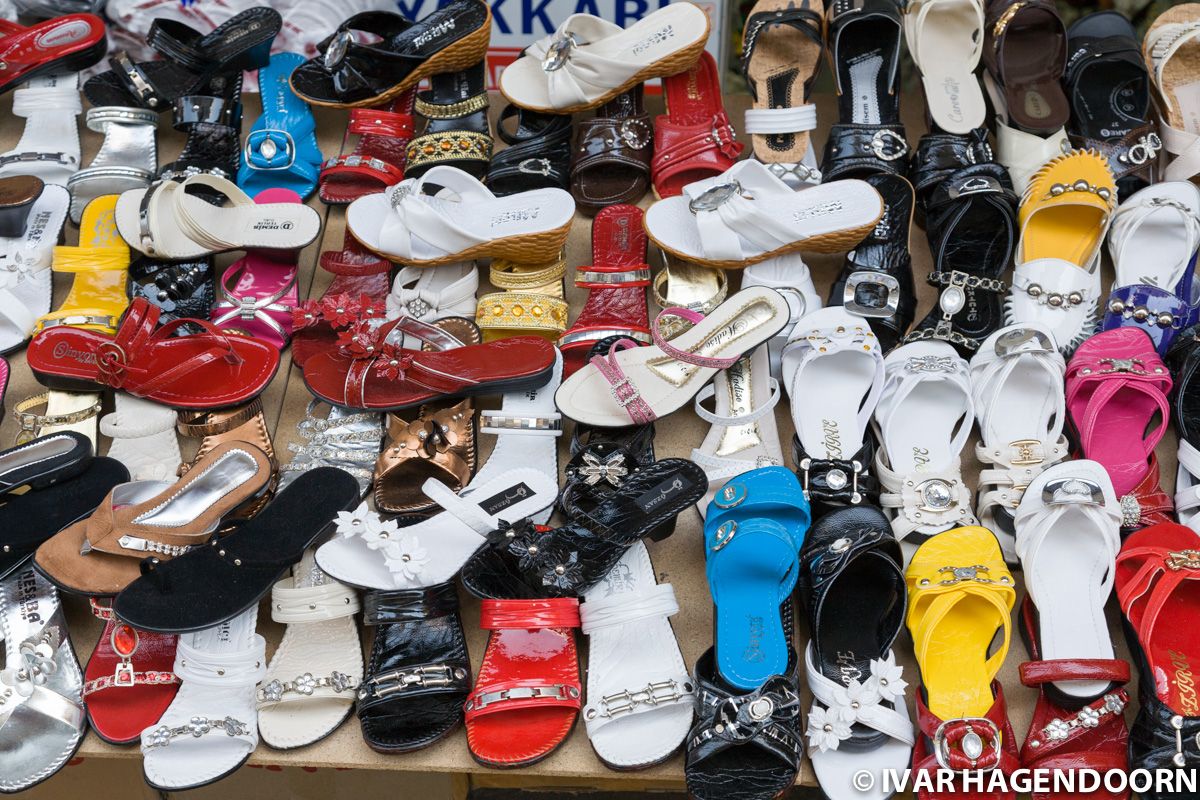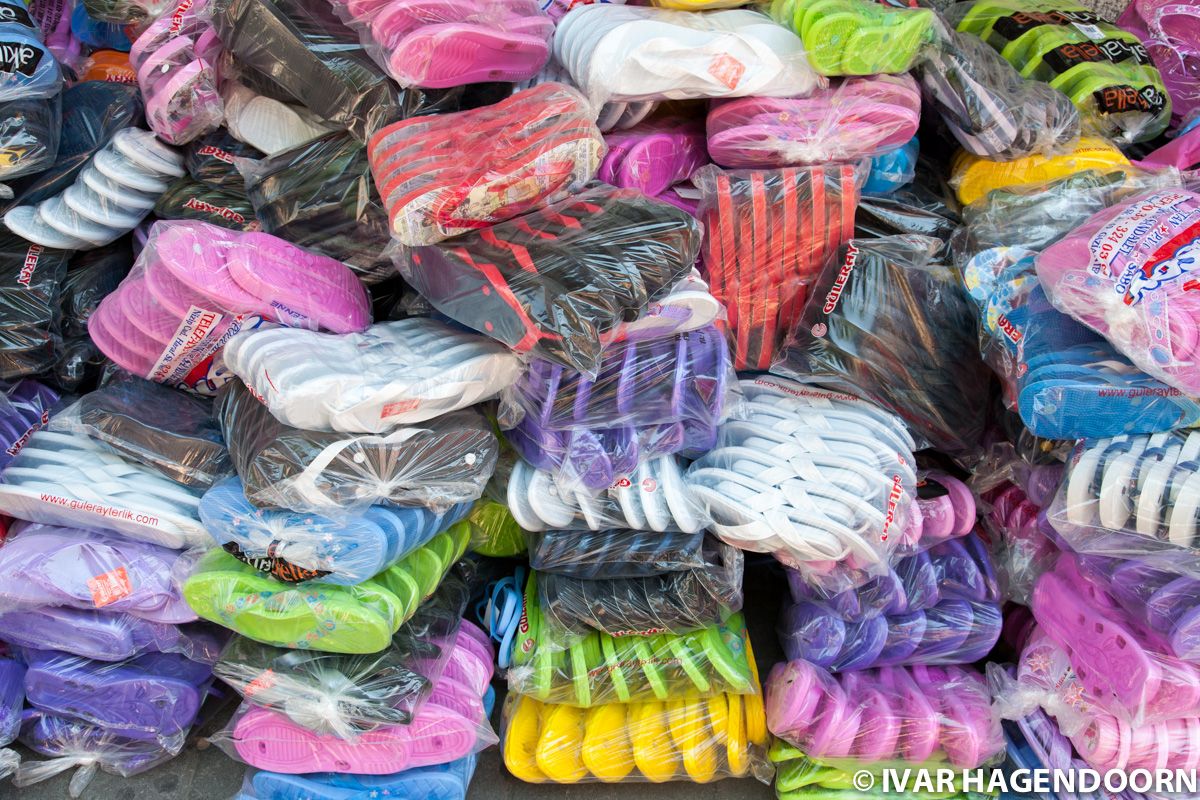

When I was in Istanbul last year I was surprised to find so many fashion retailers. As in Hong Kong and Delhi shops and showrooms are clustered by product. But Istanbul is pretty extreme in this respect. There was an area with wedding dresses, an area with leather products, an area with textiles, a shoe area and within the shoe area a street with shops specializing in soles, insoles, sports shoes, flip flops and so on. I was a bit puzzled at first when I looked inside one shop window, until I realized that these were women's heels in all kinds of shapes and sizes.
This sounds like an example of Hotelling's law which is also known as the principle of minimum differentiation, first stated by Harold Hotelling in 1929. It is usually explained with two icecream vendors on a beach. On a linear stretch of beach, with evenly spaced sunbathers, the optimal location for a single icecream stand is at the centre. If there are two icecream stands each vendor will position himself so as to maximize the stretch of beach closest to his stand. As a result both stands will end up next to each at the centre of the beach.
I remember that when I was first told about this law during a microeconomics course, all students were like, wow, really, that's great. Then we were told that in 1979 a paper in Econometrica showed that Hotelling's law depends on the shape of the cost function. Too bad. Then we learned that another paper in Econometrica, several years later, showed that the principle of minimum differentiation does hold when products and consumers are heterogeneous. That's when class ended.
Of course, these models are based on various stylized assumptions and describe patterns that occur given the underlying assumptions, which are not necessarily those that occur in practice. Hotelling assumed that retailers sell one product, but in fact they sell many and importantly variations on the same product. If consumers want to compare the products of different stores before making a purchase then clustering makes sense.
I'm not familiar with the latest research in urban economics and economic geography, if you know of any recent work in this area, please do drop me a line, as I'm intrigued.
My hunch is that it depends on the type of goods or services. It makes sense for a manufacturer of shoelaces to set up shop in an area where there are also shoe sole retailers. For a dentist it makes sense to go to an area where there are few other dentists. The same probably holds for hairstylists. At least I've never come across a street lined with hairstylists.
The original Hotelling paper starts from an empty space and the relocation occurs in no time. The current situation in Istanbul, Delhi and Hong Kong has grown historically and may not reflect current competitive pressures. I'm not sure how many retailers from outside Istanbul will come to Istanbul looking for a place to sell their expertly crafted wooden lasts. It seems more likely that the agglomerations grow from within, with people starting their own business after working as an employee somewhere else. Then it makes sense to stay in the neighbourhood. It is also likely that retail locations are in part determined by legislation and town planning.
By the way, there was also a street lined up with satellite dish vendors, one of the hottest commodities in Istanbul.